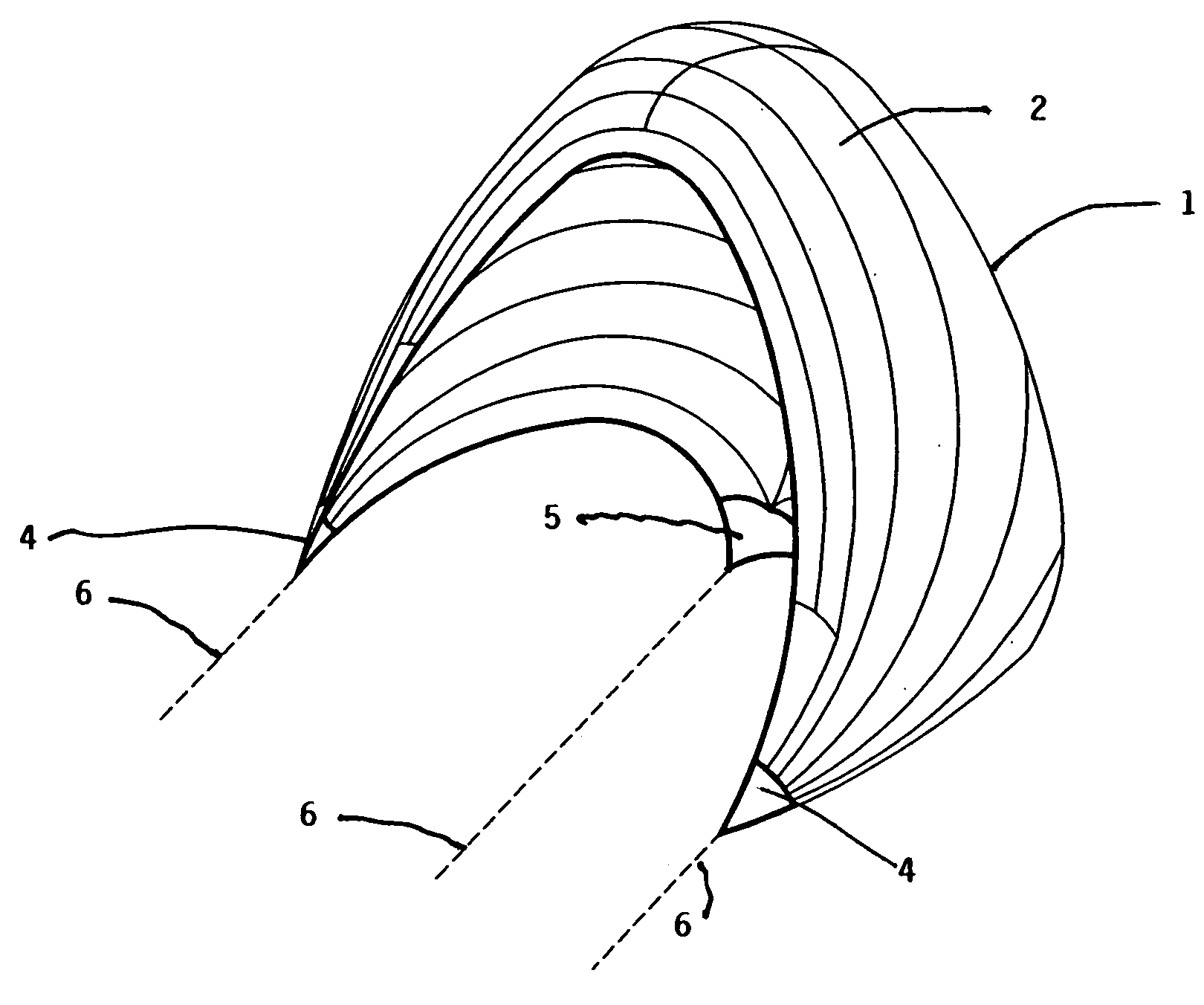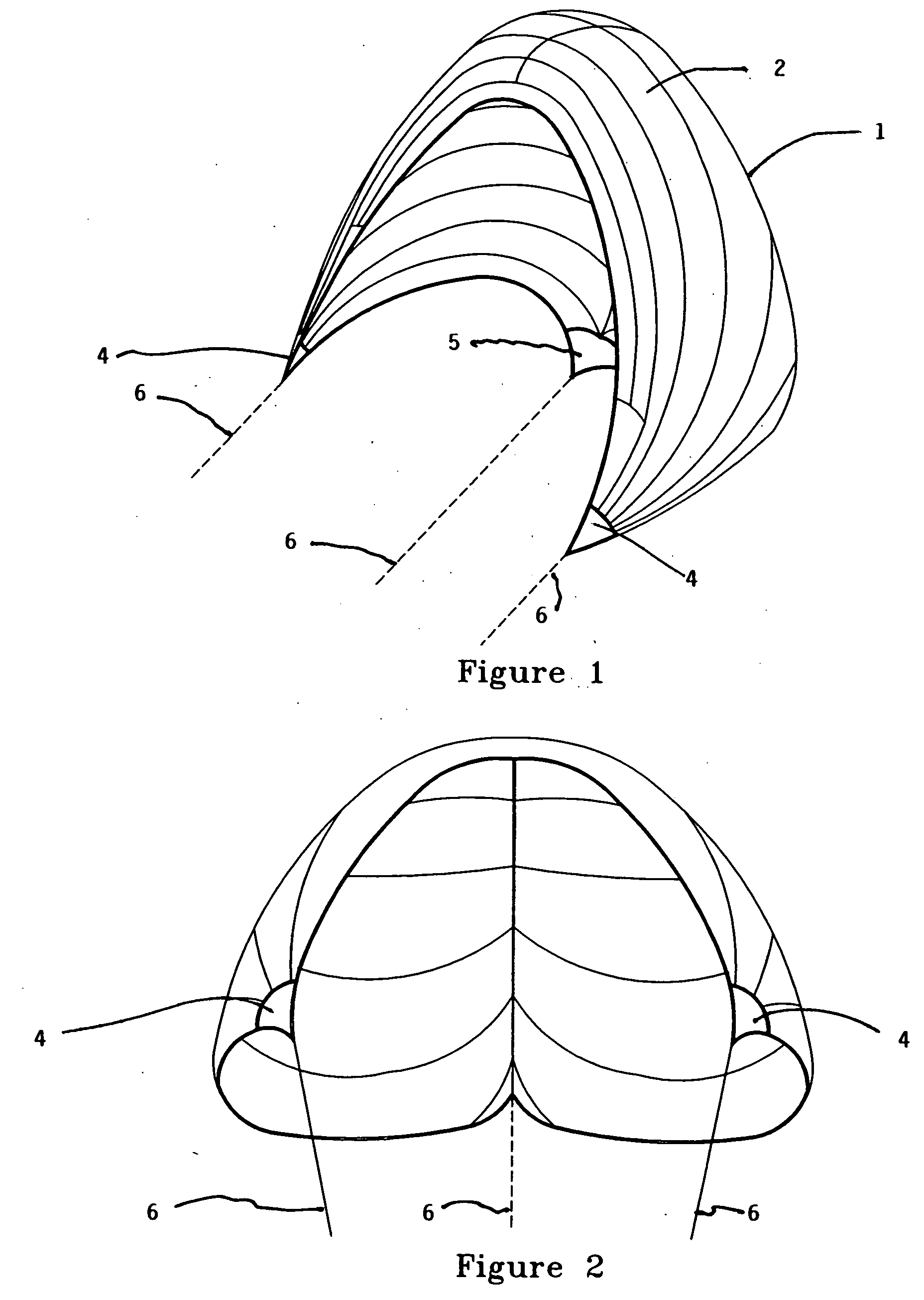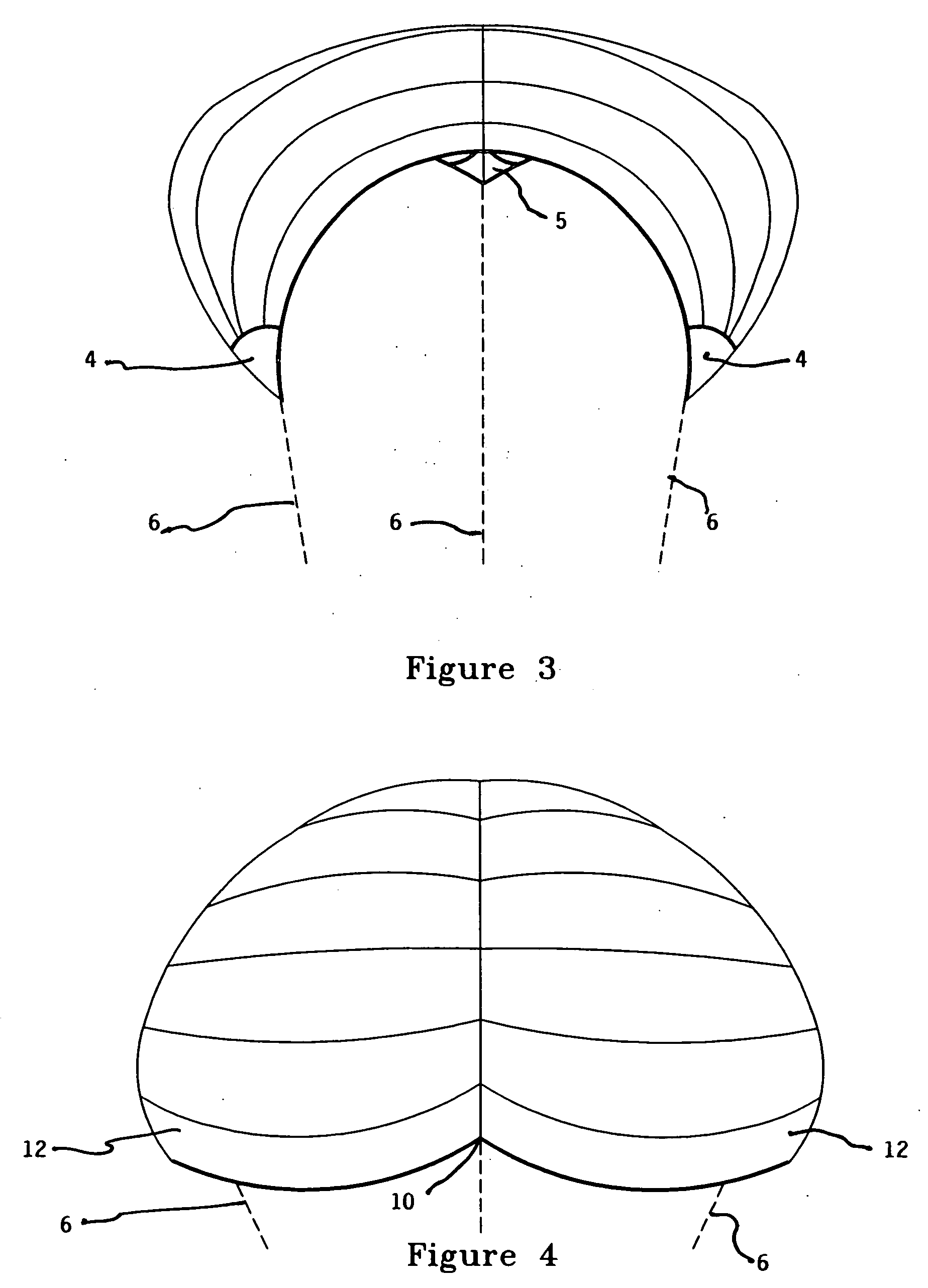Apparatus and method for aerodynamic wing
a technology of aerodynamic wings and apparatus, applied in the direction of aircraft navigation control, marine propulsion, vessel construction, etc., can solve the problems of lateral overturning moment, stability limit eventually reached, and fundamental imbalance, so as to increase the distance between the kite and the boat, the effect of easy retrieval
- Summary
- Abstract
- Description
- Claims
- Application Information
AI Technical Summary
Benefits of technology
Problems solved by technology
Method used
Image
Examples
Embodiment Construction
[0072] The preferred embodiment of the present invention differs from any existing or past sail or kite in a number of respects. First it contains a unique combination of several attributes: [0073] a) It is comprised of a three-dimensional shape (FIGS. 1-6) that is inherently stable and powerful in flight, and capable of positive control via altering flying line lengths 6. This shape is capable of supporting factors b), c), and d) below. [0074] b) It is made of a single flexible skin 1 of uniform or variable density and contains no surface discontinuities, “keels,”“flares” or similar. It is relatively lighter and stronger than similar kites with flares, as these typically impose tearing or peeling stresses on kite structures for which the structures must be designed. It contains no enclosed cells, double surfaces or interior structure of any kind. As such it is simple and inexpensive to manufacture, to maintain and to repair. It is relatively lighter in weight than other kites. [007...
PUM
 Login to View More
Login to View More Abstract
Description
Claims
Application Information
 Login to View More
Login to View More - R&D
- Intellectual Property
- Life Sciences
- Materials
- Tech Scout
- Unparalleled Data Quality
- Higher Quality Content
- 60% Fewer Hallucinations
Browse by: Latest US Patents, China's latest patents, Technical Efficacy Thesaurus, Application Domain, Technology Topic, Popular Technical Reports.
© 2025 PatSnap. All rights reserved.Legal|Privacy policy|Modern Slavery Act Transparency Statement|Sitemap|About US| Contact US: help@patsnap.com



